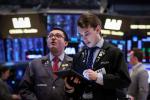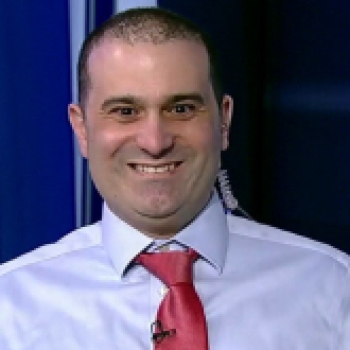
- All Instrument Types
- Indices
- Equities
- ETFs
- Funds
- Commodities
- Currencies
- Crypto
- Bonds
- Certificates
Please try another search

Asset Rollback Top Priority Of Fed: ETFs In Focus

As widely expected, the Fed stayed put on its rate hike agenda in its July meeting but called asset curtailment its top priority. Though the job market remained steady, weaker inflation kept the Fed from being too aggressive on the rate hike issue (read: Rate Sensitive ETFs in Focus as Fed Meets).
However, the Fed indicated that it plans to start normalization of its $4.5-trillion balance sheet “relatively soon.” The Fed had pursued three rounds of “quantitative easing" or QE since recession in 2008. As a result, the balance sheet ballooned over the years thanks to the buying of Treasuries and mortgage-related debt.
The move was aimed at goading economic activity. Now, the Fed is planning to end reinvestment of the proceeds from these bonds. Market watchers now expect the asset rollback policy to be announced in September (read: ETF Strategies to Win if Fed's Reverse QE Hits Soon).
Traders in the Fed funds futures market now believe that there is a 50-50 chance of the Fed enacting one more rate hike by the end of the year. Subdued inflation is primarily behind this dovish assumption. The core personal consumption expenditures index has declined from the central bank's 2% target for four successive months (read: Treasury ETFs Rally on Falling Inflation Expectation).
Yields of the benchmark 10-year U.S. Treasury notes slipped to 2.29% on July 26 from 2.33% recorded the day before. Long-term bond ETF Vanguard Extended Duration Treasury ETF (TO:EDV) added over 20.2% post Fed comments on July 26. U.S. dollar fund PowerShares DB US Dollar Bullish ETF (NYSE:UUP) UUP dropped about 0.6% on the day.
However, we would like to foresee what could happen in the ETF world if the Fed announces unwinding of stimulus or reverse QE in the next meeting in September.
Impact of Reverse QE
If everything remains sound on the global economic front and no geopolitical crisis crops up causing a safe haven rally, long-term interest rates should rise from a reverse QE. In fact, mortgage and other rates are expected to rise faster than investors’ expectations.
On the other hand, the Fed may stay away from a steeper short-term rate hike trajectory if it starts unwinding bond holdings alongside. This scenario would result in steepening of the yield curve.
Given this, investors must be interested in finding out all possible strategies to weather a sudden jump in interest rates. For them, below we highlighted a few ETF investing options that could bring gains in a rising rate environment.
Highland/iBoxx Senior Loan ETF (SI:SNLN)
There is an option to tap bank loan ETFs like SNLN. Senior loans, also known as leveraged loans, are private debt instruments issued by a bank and syndicated by a group of banks or institutional investors. It yields about 4.59% annually.
iShares 0-5 Year High Yield Corporate Bond ETF SHYG
The fund offers exposure to liquid high yield corporate bonds maturing between zero and five years. It carries relatively less interest rate risk while at the same time offers 5.55% yields annually.
ProShares Investment Grade Interest Rate Hedged ETF IGHG
The fund holds investment grade bonds in its portfolio and looks to alleviate rising rate worries through an interest rate hedge approach using U.S. Treasury futures. Since the fund targets a duration of zero, this could be an intriguing play right now. It yields about 3.27% annually.
Barclays (LON:BARC) Inverse US Treasury Aggregate ETN (CM:TAPR)
Last but not the least, who can forget inverse bond ETFs in such a scenario? The product TAPR looks to track the sum of the returns of periodically rebalanced short positions in equal face values of each of the Treasury futures contracts (see all Inverse Bond ETFs here).
Bottom Line
Having said this, we would like to note that any disruption in the fixed income market would be short-term in nature if the Fed pulls out the crisis-era stimulus. As per an article, The Fed’s current exposure to the fixed-income market is not as high as it was in early 2000.
The source elucidated that the U.S. central bank now has about $2.46 trillion of Treasuries, more than thrice it had in the crisis-stricken 2007, and around five times more than it had in the dot-com bubble era of 2000. The Fed today has about 23.1% of all outstanding Treasury notes and bonds, which is lower than 24.7% in 2007, 23.6% in 2000 and 29% in 2002. Higher bond issuances created this situation.
As per Wells Fargo (NYSE:WFC), “net bond issuance in 2018 alone, comprising all interest-bearing securities, will rise to just under $800bn.” If the U.S. Treasury market can stay steady with such huge bond amounts, the Fed’s gradual shrinking should not upset the momentum too severely.
Want key ETF info delivered straight to your inbox?
Zacks’ free Fund Newsletter will brief you on top news and analysis, as well as top-performing ETFs, each week. Get it free >>
PWRSH-DB US$ BU (UUP): ETF Research Reports
VANGD-EX DUR TR (EDV): ETF Research Reports
ISHARS-0-5Y HCB (SHYG): ETF Research Reports
BARCLY-INV USTC (TAPR): ETF Research Reports
PRO-INV GIR HDG (IGHG): ETF Research Reports
HILND/IBX-SR LN (SNLN): ETF Research Reports
Original post
Zacks Investment Research
Related Articles

The fortune of Nvidia (NASDAQ:NVDA) is closely tied to Big Tech hyperscalers. Although the AI/GPU designer didn’t name its largest clients in the latest 10-K filing on Wednesday,...

In a market fraught with uncertainty, investors often seek refuge in defensive-minded stocks that offer stability and resilience. Two such stalwarts, Johnson & Johnson and...

The United States is the largest exporter of liquefied natural gas (LNG), having surpassed Australia and Qatar in 2023. The United States exports an estimated 12.5 billion cubic...
Are you sure you want to block %USER_NAME%?
By doing so, you and %USER_NAME% will not be able to see any of each other's Investing.com's posts.
%USER_NAME% was successfully added to your Block List
Since you’ve just unblocked this person, you must wait 48 hours before renewing the block.
I feel that this comment is:
Thank You!
Your report has been sent to our moderators for review



Add a Comment
We encourage you to use comments to engage with other users, share your perspective and ask questions of authors and each other. However, in order to maintain the high level of discourse we’ve all come to value and expect, please keep the following criteria in mind:
Enrich the conversation, don’t trash it.
Stay focused and on track. Only post material that’s relevant to the topic being discussed.
Be respectful. Even negative opinions can be framed positively and diplomatically. Avoid profanity, slander or personal attacks directed at an author or another user. Racism, sexism and other forms of discrimination will not be tolerated.
Perpetrators of spam or abuse will be deleted from the site and prohibited from future registration at Investing.com’s discretion.